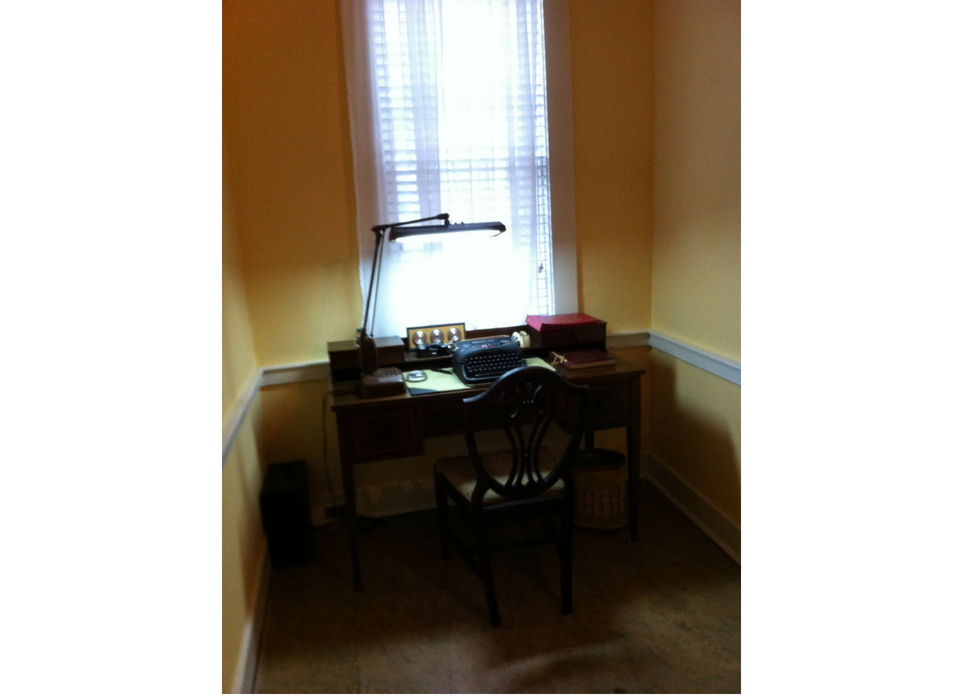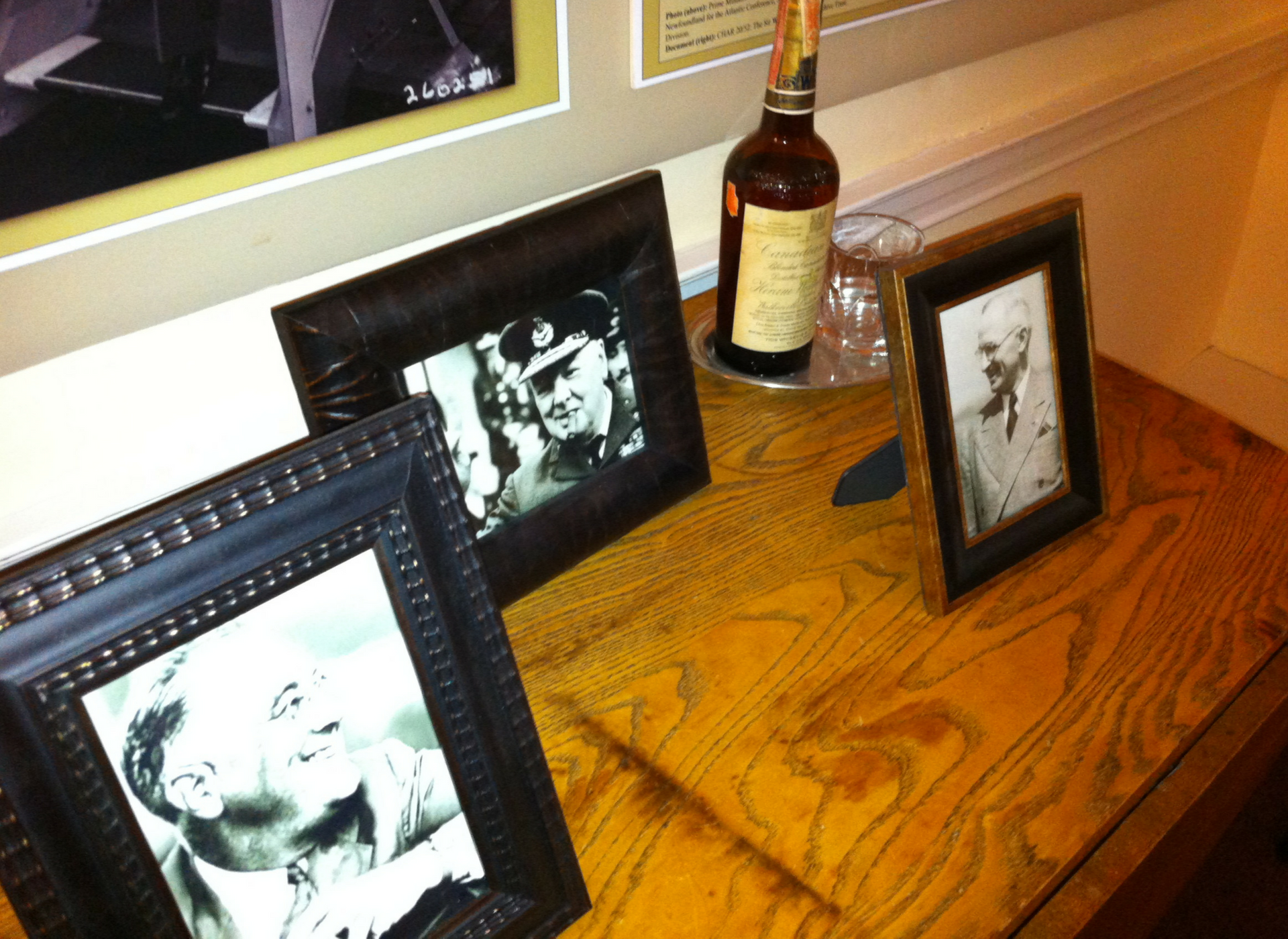One of my favorite pastimes when traveling and visiting places that feature some historical personality is to see where they worked and lived, and perhaps gain some insight into their character by their surroundings. As a student, I remember reading descriptions and looking at photographs of Adolf Hitler’s office in the Chancellery in Berlin. It featured towering doorways and ceilings, with sentries posted under Hitler’s initials carved in marble above the entry. Inside the doors, Hitler’s office was a huge room, with a long desk and high-backed chair for meetings at one end but also a heavy table, fireplace with sitting areas, and paintings hung on the walls. It was all meant to impress and overwhelm visitors with his power.
A great antidote to all that Hitler represented can be found at Dodona Manor, the personal home of General George C. Marshall, chief of staff of the US Army during the war. Located in Leesburg, Virginia, the home is a museum today. General Marshall was a famously reserved and formal man, completely dedicated to his job and profession. As is well known, Marshall would have been the natural pick as the senior officer to lead the invasion of Normandy, with all of the martial glory that operation would entail, but instead he stayed at his post when President Franklin Roosevelt indicated that he would prefer to have Marshall by his side conducting the war from Washington, DC. Marshall and his wife bought the home in 1941, and it was to this red-roofed, yellow house set in a peaceful grove of oak trees that Marshall returned after his labors in Washington, DC, during the war. A student of classical Greek and Roman history, Marshall chose the name Dodona after the oracle, second only in prestige to the oracle at Delphi, who spoke through oak tree leaves at Dodona in Epirus, Greece.
The Marshall’s home has a simple feel despite the fact that one brushes up against history when passing through it. For example, in the living room visitors can view their books, 1950s-era television set, and comfortable furniture—along with a painting by Winston Churchill that he presented personally to the General. In the kitchen, one can view the General’s liquor bottles and cocktail equipment, next to portraits of the leaders he worked with and served—Roosevelt, Churchill, and Harry Truman.
But for me, perhaps the most delightful discovery was a small room that on one end contains a cabinet with a secret compartment where liquor was hidden because Loudon County, where Leesburg is located, was a dry county. But more importantly, under the window on the other side of the small room is the desk where General Marshall worked when he was home. The plain desk holds a lamp, a typewriter, and simple office equipment. No photographs or paintings adorn the walls. A more simple and sober workspace almost cannot be imagined.
Many people know that Marshall the self-effacing soldier was the military architect of victory in World War II. But many do not know that due to his efforts to restore peace after the war, when he served as secretary of state and initiated the international financial plan that bears his name and provided the financial means for Europe’s postwar economic recovery, Marshall received the Nobel Peace Prize in 1953. A professional at war, he remains the only general who has ever received the peace prize.
The picture of George Marshall’s simple desk in his home set among oak trees in Virginia is worth contemplating on many levels. It is a symbol of the democratic spirit, as the truly great man who worked at it put service to his nation and its cause above his own personal concerns. It is a symbol of righteous war, as the man who worked there organized the greatest military forces ever known for liberation, not conquest and tyranny. It is a symbol of peace, as the man who worked there not only knew how to win on the battlefield, but had the greatness and generosity of spirit to work toward healing the world after prevailing in World War II. Finally, it is a symbol of character. George Marshall’s simple desk reflects the humbleness and devotion to duty that not only was his, but that of millions of young veterans who went from similar nondescript desks in their own homes to serve at battlefields across the world. From all those simple desks, the world’s destiny was changed.

"No matter one’s age, travel is a unique and exciting educational experience. In my work, I have had the opportunity to reflect on history, events, and people in the places where they experienced life. Through the viewfinder, we can not only find history and perspective, but create memory, and evoke our evergreen past."
– Keith Huxen, PhD, Senior Director of Research and History, The National WWII Museum
Keith Huxen
Keith is the former Senior Director of Research and History in the Institute for the Study of War and Democracy at The National WWII Museum.
Cite this article:
MLA Citation:
APA Citation:
Chicago Style Citation:






![Max Fuchs, New York City cantor, sings as Rabbi Sydney [sic] Lefkowitz, Richmond, VA, conducts the first Jewish services from Germany.](/sites/default/files/styles/max_650x650/public/2025-10/image1.jpg)



